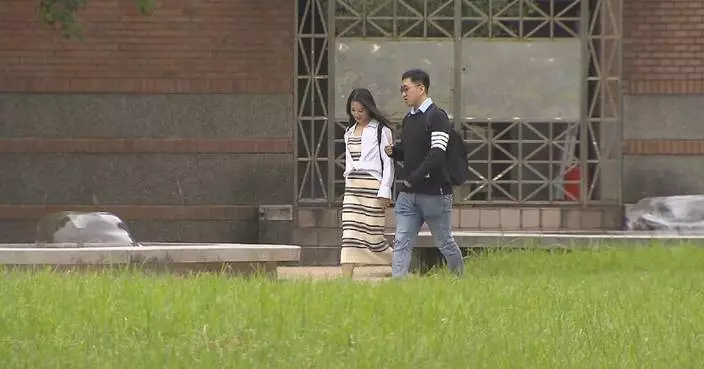Building upon the ancient Chinese wisdom that humanity and the natural world were closely interconnected, China today is committed to developing an ecological civilization.
In this episode of the documentary series titled "Classic Quotes by Xi Jinping", CGTN host Sui Xiang and Alexis Lavis, associate professor in philosophy at the Renmin University of China, went to the Saihanba Forest Farm in north China's Hebei Province and witnessed a miracle there: a wasteland has been turned into a huge forest.
"All things come to be when elements are balanced for their survival, and flourish when they get properly nourished." This was a quote from Xunzi, thinker and philosopher from the Warring States Period (475-221 BC), cited by President Xi Jinping at the Leaders' Summit of the 15th Meeting of the Conference of the Parties to the Convention on Biological Diversity in Oct 2021.
It was emphasized in the report to the 20th National Congress of the Communist Party of China (CPC) in 2022 that "we should maintain harmony between humanity and nature when planning our development".
Saihanba is a vivid example, reflecting how the harmonious development of humans and nature can lead to a greener future.
The forest in Saihanba, spanning about 80,000 hectares, is home to the largest artificial forest in the world.
Advanced technologies have been adopted to help guard the forest against fire.
"We now use drones for routine patrols over the forest camp. We have operated a drone patrol squadron with eight UAVs. These drones are part of our space-air-ground integration initiative which has played a vital part in forest fire prevention. Infrared radar fire detection, lightning warning and monitoring, forest fire video surveillance and satellite hotspot monitoring, these high-tech tools help enable 24/7 dynamic monitoring of fires in the entire forest region," said Peng Zhijie, director of the Fire Prevention Office of Saihanba Machinery Forest Farm.
"To prevent fires in summer, giving early warnings of lightning is a very important task. When a thunderbolt occurs about 10 km away from the farm boundary with an intensity over 50 kA, the system will send an instant message to the back-stage staff and mobile phones of lookouts on nearby fire observation towers," said Peng.
"The observation tower serves as the eye of the forest. Our job is to look out for fire within our visual range," said Liu Jun, a fire lookout worker at the Saihanba Machinery Forest Farm.
Liu and his wife Wang Juan have been on watch on top of the tower for many years.
"It has always been the two of us here, accompanying and supporting each other. It is hard and lonely. But we can see changes every day. Saplings are growing into towering trees," said Wang.
"This sea of forest is our home," said Liu.
Everyone in Saihanba has a unique story to tell. About a century ago, it was a pastureland with plenty of grass and water and a dense forest. Exploitative logging and constant bushfire degraded Saihanba into barren hills.
It took these forest rangers three generations to restore the boundless wasteland into a magnificent sea of forest in 60 years.
President Xi Jinping spoke highly of the perseverance of the people in Saihanba over all these years. He said their stories were deeply touching, representing a vivid example of people promoting ecological conservation.
Since 2012, the area of artificial forests and grasslands in China has exceeded 73 million hectares.
As part of this greening endeavor, up to 128,000 species have been discovered and recorded. The population of more than 300 species of endangered wildlife has seen restorative growth.
Xi said at the 20th National Congress of the Communist Party of China that the Chinese path to modernization is a process of modernization of harmony between humanity and nature.
"Humans and nature are part of a community with a shared future. The generosity of nature does not necessarily mean that it is right to see it as a reserve of inexhaustible resources," said Alexis Lavis, who also shared his view on China's role in global ecological conservation. "The role can be manifested at two levels. Firstly and most visibly, in the short- and mid-term, China will lead global ecological conservation efforts because of population, technology and geopolitics. On the other hand, China has a longer-term, more profound role in this respect, since philosophical wisdom from ancient China redefined nature in a way that changed the relationship between human and nature," he said.
"All things come to be when elements are balanced for their survival, and flourish when they get properly nourished. Biodiversity makes Earth full of vigor and vitality, and lays the foundation for human survival and development. Protecting biodiversity helps protect Earth, our common homeland, and contributes to humanity's sustainable development," said Xi at the Leaders' Summit of the 15th Meeting of the Conference of the Parties to the Convention on Biological Diversity on Oct 12, 2021.

China stays committed to green development









